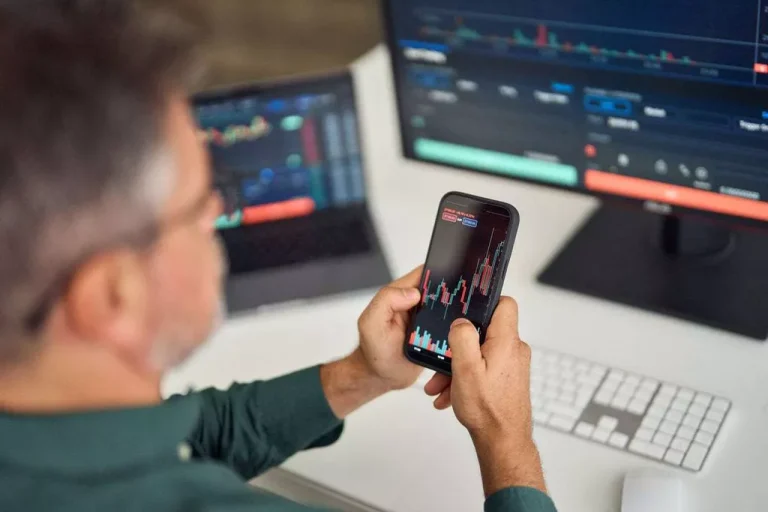Market volatility could be decided by the standard deviation of price changes over a selected period. The worth of normal deviation may enable you to identify the divergence of prices forex volatility indicator from the imply. Volatility of a inventory or a set asset is the modifications in its worth over a given time frame.
Understanding Stock Market Volatility

In the chart uploaded beneath, one can see, banknifty script is attached with a historic volatility indicator with default settings. Liquidity danger arises when buyers are unable to buy or sell property with out significantly affecting their costs. During durations of market stress, liquidity can dry up, leading to sharp price actions and elevated volatility. Investors ought to be cautious about holding illiquid property and guarantee they’ve adequate liquidity of their portfolios to meet potential cash move wants. Volatility is a crucial facet of the financial markets that each one buyers should understand.
Market Liquidity And Flow-driven Threat
Higher volatility indicates larger worth swings and greater uncertainty, whereas decrease volatility reflects extra stable and predictable conditions. Investors decide the extent of threat involved in a specific stock, sector, or total market by quantifying volatility. Popular volatility metrics just like the VIX (the “fear measure” index) permit us to determine when market sentiment is changing into fearful or complacent. Stocks of small and mid-cap firms have high market liquidity risk, as acknowledged above. This is because buyers are uncertain of their potential growth in the future and hence, are unwilling to purchase such securities in fear of incurring losses in the lengthy term.

What Does Low Volatility Means For Inventory Market Investors?
This technique helps spread danger and reduce the influence of sudden market fluctuations, making certain a extra steady long-term funding strategy. Navigating unstable markets requires a combination of careful planning, risk administration, and adaptableness. Volatility, the swift fluctuation of stock prices, can be tracked utilizing a number of metrics that assist investors understand and handle risks successfully. Additionally, it influences investor sentiment, as durations of high volatility can trigger fear or pleasure, impacting market behaviour. For companies, understanding their liquid property is essential as these funds are required to settle any pending bills or money owed.
How Can Buyers Manage Liquidity Danger Of Their Portfolios?
In essence, liquidity acts as a buffer towards market volatility, ensuring that even large trades can be executed effectively with out inflicting undue disruption to market prices. This is as a result of there aren’t sufficient buyers or sellers to soak up such massive transactions with out causing vital worth movements. On the opposite hand, in liquid markets, characterised by ample buying and selling activity and depth, giant trades can be absorbed more easily without causing substantial worth modifications. Picture a busy market the place persons are continually buying and selling goods without inflicting chaos—that’s what liquidity does within the inventory market. It ensures that there’s all the time somebody prepared to purchase or sell stocks, making it simpler for everybody to take part in the market. Such excessive risks come up from the volatility of those corporations, as they’re closely depending on fairness cash flows for a era of revenue.
- As a consequence, bid-ask spreads may widen, reflecting the elevated reluctance of market participants to transact at earlier worth levels.
- Volatility typically creates opportunities for savvy investors who distinguish between normal volatility causes and extra persistent risks.
- After FM Nirmala Sitharaman’s announcement for the Interim Budget 2024, Indian fairness market benchmarks the Nifty 50 and the S&P BSE Sensex oscillated between gains and losses and traded in a range.
The Way To Deal With Market Volatility

Historical volatility is a statistical measure of the degree of value fluctuation for a security over a particular time frame. It quantifies the dispersion of returns relative to the average return, indicating how quickly and unpredictably prices have modified in the past. The Average True Range (ATR) calculates the typical daily trading range over a interval, accounting for gaps and limit strikes. This provides a volatility metric useful for short-term merchants making decisions on cease placement and place sizing. A high ATR signifies rising volatility and choppiness, which are favorable for breakout methods.
Developed by Fischer Black, Myron Scholes, and Robert Merton, this model revolutionized the pricing of options and incorporated implied volatility as a key issue. The mannequin was so impactful that it led to a Nobel Prize in Economics for Scholes and Merton in 1997. Episode 3 of ‘Winning Over Volatility’ make clear ETFs and their rising popularity, how they compare to mutual funds, and whether or not now might be the proper time to spend money on ETFs. When it comes to debt fund investments, credit score ratings of corporations issued by credit standing agencies is considered to be the guiding light for buyers.
How Many Individuals Are Investing In The Markets?
During durations of excessive market volatility, ETFs can also face challenges related to liquidity. Increased volatility can lead to wider bid-ask spreads, making it more pricey to purchase or promote ETF shares. Additionally, if market individuals turn into extra risk-averse during volatile occasions, the trading quantity of ETFs may lower, additional impacting liquidity.
Volatility, on the other hand, measures the magnitude and frequency of price modifications. So whereas excessive volatility can increase danger, low volatility doesn’t necessarily imply low danger. The micro factors similar to regularly spectating the monetary and enterprise updates associated to an organization ought to be part of the day by day evaluation. You should discover dependable news source/s and use financial calendars to observe key events that might impression your evaluation. Technological developments have considerably impacted derivatives buying and selling and its affect on market volatility. When investors understand increased danger available in the market, they have a tendency to turn out to be extra cautious, resulting in a decrease in buying and selling exercise.
Volatility refers back to the magnitude of day-to-day worth fluctuations out there. High volatility is characterised by giant daily swings and heavy trading volume as buyers react to new developments. Understanding the implications of spikes in volatility is essential to navigating turbulent markets.
Low liquidity means there aren’t many probabilities to buy and sell, making assets hard to commerce. When the economy grows, more buyers need to enter the markets including to the market volatility and asset prices. Conversely, in a sinking financial system, extra buyers give up the markets, creating instability and imbalance in market volatility. One of the most important elements that affect market volatility is the state of the economic system. The significance of volatility out there can’t be overstated, as it could have a significant impact on investment portfolios.
Volatile shares have the potential for dramatic price positive aspects briefly intervals. Investors must weigh whether or not the risk is worth the potential reward based mostly on their objectives and threat tolerance. Volatility analysis works by taking a glance at historic price data over a period of time. Statistical strategies like standard deviation are used to quantify volatility.
Read more about https://www.xcritical.in/ here.
Leave a Comment